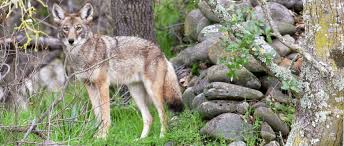There has been an ongoing discussion among hunters, conservationists, and wildlife enthusiasts: Are coyotes killing the “doomed surplus” of deer fawns? This topic has provoked debate and has been subject to various studies, trying to understand the coyote-deer dynamic better. Let’s delve into this complex issue and see what the latest research has to say.
The Predator-Prey Relationship:
Understanding the predator-prey dynamic is crucial when assessing the impact of coyotes on deer populations. Predators, like coyotes, play a vital role in controlling prey populations and maintaining the balance within an ecosystem. Without predators, prey populations can explode, leading to overgrazing and eventually destroying their habitats.
The Coyote-Deer Dynamic:
Coyotes, as opportunistic omnivores, consume a variety of food sources, including small mammals, fruits, insects, and carrion. They are also known to prey on deer fawns, especially during spring and early summer when fawns are most vulnerable.
Deer populations have a biological phenomenon known as “compensatory mortality,” where they produce more offspring than the environment can support, expecting that a certain percentage won’t survive due to natural causes, including predation. This is often referred to as the “doomed surplus.”
Studies and Findings:
Recent research conducted on the coyote-deer relationship has provided some insights.
For instance, a study by the Southeastern Cooperative Wildlife Disease Study (SCWDS) at the University of Georgia found that while coyotes do prey on fawns, they are not the sole cause of fawn mortality. Other factors such as malnutrition, disease, accidents, and other predators also play significant roles.
Another study in South Carolina found that areas with intense coyote removal saw a slight increase in fawn survival, but it was not enough to significantly affect the overall deer population.
What does this mean?
These findings suggest that while coyotes do contribute to fawn mortality, they are not solely responsible for the “doomed surplus.” Coyotes, like other predators, take advantage of the surplus and help maintain a balance in the ecosystem.
Moreover, these studies also imply that deer populations can withstand predation by coyotes and still maintain healthy numbers.
Conclusion:
The question, “Are coyotes killing the ‘doomed surplus’ of deer fawns?” is more complex than a simple yes or no answer. Coyotes, as part of a broader ecosystem, do prey on fawns, but they are not the only factor contributing to fawn mortality.
It’s essential to remember that nature’s intricacies often surpass our understanding, and simple predator-prey narratives might not capture the whole picture. As responsible hunters and conservationists, we should strive to understand these dynamics better and promote healthy and balanced ecosystems.
Stay tuned to AntlerXtreme for more insights into the incredible world of deer hunting and conservation.
Contact us today to learn more about AntlerXtreme Contact


